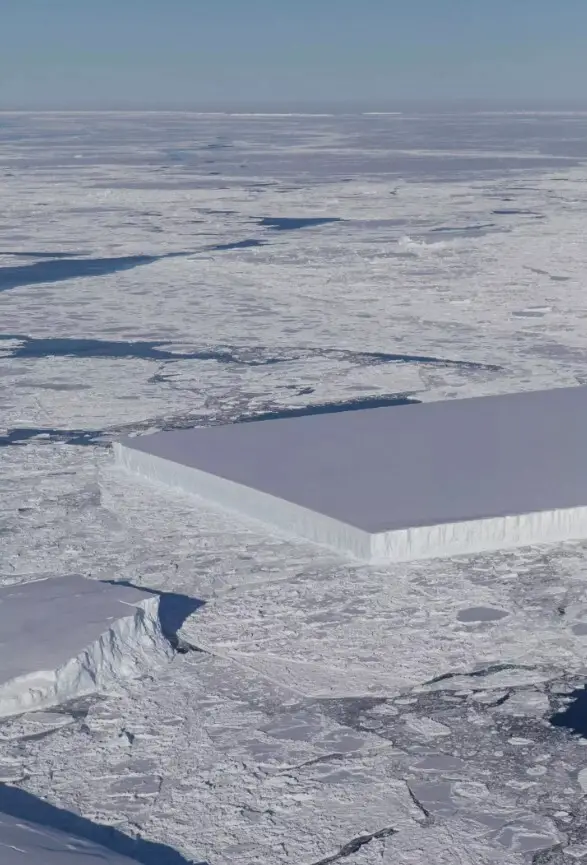NASA recently captured an astonishing image of a perfectly rectangular iceberg floating off the Larsen C ice shelf in Antarctica. The iceberg, weighing approximately 1 trillion tons, appears as if it was meticulously carved with straight edges and right angles, leading some to call it a “glitch in the matrix.” This remarkable formation was part of NASA’s Operation IceBridge, which aims to study the polar regions and changes in ice sheets.
The iceberg, identified as a tabular iceberg, features steep sides and a flat surface. Such icebergs often break off from ice shelves with clean, angular edges, though these sharp angles usually wear down quickly due to wind and ocean activity. Despite its unnatural appearance, the rectangular shape is a natural phenomenon.

This discovery highlights the dynamic and sometimes surprising nature of ice formations in polar regions. The massive iceberg’s clean lines and immense size have captured public interest, further emphasizing the importance of monitoring and studying these remote areas.
While the iceberg’s perfect shape may seem extraordinary, it underscores the ongoing natural processes shaping our planet’s icy landscapes.




